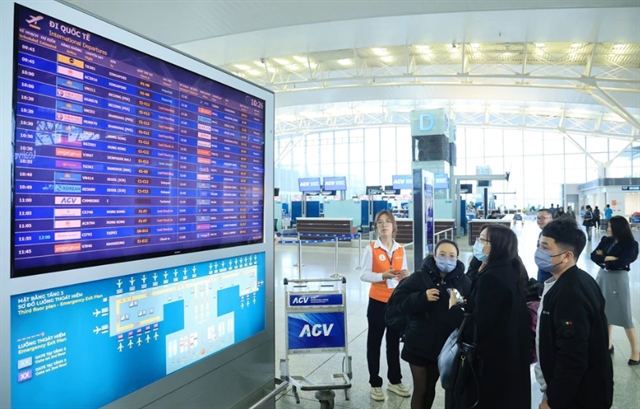 Society
Society


|
| AI generated photo for illustration. |
HÀ NỘI — Việt Nam's workforce demand in the semiconductor–microchip field is forecast to be around 20,000 engineers over the next five years, and 50,000 engineers in the next 10 years, according to economists from the Fulbright University.
Regarding Việt Nam's preparations for training high-quality human resources to work in the semiconductor industry, Nguyễn Thu Thuỷ, director of the Higher Education Department under the Ministry of Education and Training, said the number of microchip designing engineers in the country is approximately 5,000.
According to experts from technology universities, the demand for human resources in this area in the coming years is expected to be around 3,000 engineers per year, with at least 30 per cent of them having postgraduate degrees.
Việt Nam is home to over 50 foreign-invested businesses that have invested in the microelectronics and semiconductor industry and have significant demand for high-quality human resources, especially in the field of microchip design.
It is expected that more corporations will invest in Việt Nam to design and produce microchips in the coming time.
Thuỷ said Việt Nam has many policies to encourage higher education institutions to expand and develop Science, Technology, Engineering and Mathematics (STEM) training programmes and sectors related to information technology and communications, while also serving the demand of workers for the Fourth Industrial Revolution, AI, and Big Data.
During 2019-22, the number of new students in STEM fields increased by an average of 10 per cent per year, surpassing the overall growth rate of 6.5 per cent. The fields with the strongest annual growth rates were computer science and information technology (17.1 per cent) and engineering technology (10.6 per cent).
Leading technology universities in Việt Nam are ready in terms of training capacity to meet the demand for human resources in the semiconductor and microchip industry.
Thuỷ also mentioned challenges facing education and training institutions in attracting students and improving the quality of training to meet the strict requirements of businesses, saying that it is necessary to have relevant support policies from the State.
According to Thuỷ, the Ministry of Education and Training is presiding over the development of two important projects on training and developing high-quality human resources to serve in high technology, including support and incentive policies for human resources development in STEM and high technology, such as electronics, semiconductors, and microchips; and forming research and training centres focusing on core technologies of Industry 4.0.
The ministry is rushing to develop an action plan to promote training and research related to semiconductor and microchip technology, which is expected to be submitted to the Prime Minister within this month, Thuỷ added. — VNS

.jpg)


